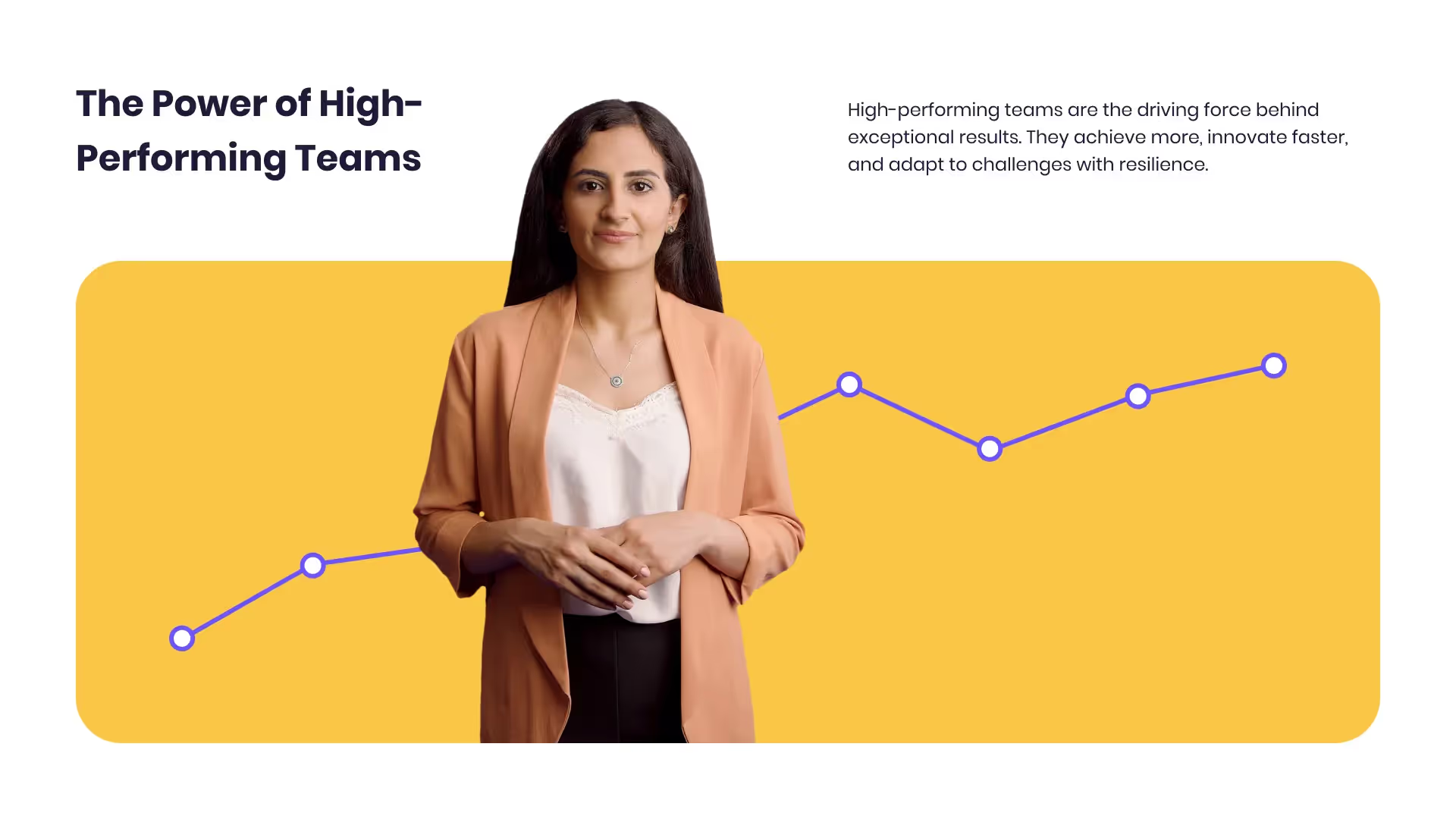Want a personalised avatar?
.avif)
Create an Instant Avatar in under a minute using your phone or camera. Fast, simple, and true to you.

Top eLearning Authoring Tools Every Course Creator Should Know


The authoring tools market is crowded. As of November 2025, 206 tools are listed in eLearning Industry’s directory. And the line between “authoring tool” and “course builder” keeps blurring. That’s why the right choice depends on your use case, not a generic “best of” list.
This guide gives you a practical way to choose, a quick set of best picks by scenario, short notes on top tools, and where I’ve seen AI video help teams move faster and measure more. I work at Colossyan, so when I mention video, I’ll explain exactly how I would pair it with these tools.
How to Choose: Evaluation Criteria and Deployment Models
Start with must-haves and be honest about constraints.
- Standards and data: SCORM is table stakes. If you need deeper event data or modern LRS flows, look at xAPI and cmi5. Academic stacks may need LTI. Check your LMS first.
- Interactivity: Branching, robust quizzes, and drag-and-drop should be simple to build.
- Collaboration and governance: Shared asset libraries, permissions, versioning, and review workflows matter once you scale.
- Mobile/responsive output: “Works on mobile” is not the same as “designed for mobile.”
- Localization: Translation workflows, multi-language variants in one course, or at least an efficient way to manage many language copies.
- Analytics: Built-in analytics help you iterate; relying only on LMS completion/score data slows improvement.
Deployment trade-offs
- Desktop: More customization and offline use, but slower updates and weaker collaboration.
- Cloud/SaaS: Real-time collaboration and auto updates, but ongoing subscription.
- Open source: No license fees and maximum control, but higher IT and dev skills needed.
Independent frameworks can help. eLearning Industry ranks tools across nine factors (support, experience, features, innovation, reviews, growth potential, retention, employee turnover, social responsibility). Gyrus adds accessibility, advanced features (VR/gamification/adaptive), and community.
My opinion: If you need to scale to many teams and countries, pick cloud-first with strong governance. If you build a few bespoke simulations per year, desktop can be fine.
Quick Comparison: Best-in-Class Picks by Scenario
Rapid, mobile-first authoring
- Rise 360: Fast, block-based, mobile-first; limited deep customization.
- Easygenerator: SME-friendly, built-in analytics; auto-translate into 75 languages.
- How to pair Colossyan: Convert docs or PPTs to on-brand videos in minutes with Doc2Video and Brand Kits, add quizzes, and export SCORM for the LMS.
Advanced custom interactivity and simulations
- Storyline 360: Very customizable interactions; slower to author; weaker mobile optimization.
- Adobe Captivate: Advanced sims and VR; steep learning curve; strong accessibility.
- dominKnow | ONE: Flow/Claro modes, single-source reuse, and collaboration.
- How to pair Colossyan: Front-load storylines with short explainer videos using avatars and conversation mode, then let the tool handle the branching. I export SCORM to capture pass/fail.
Global rollouts
- Elucidat: Up to 4x faster with best-practice templates; auto-translate to 75 languages; strong analytics and variation management.
- Gomo: Supports multi-language “layers” and localization for 160+ languages.
- Genially: AI translation into 100+ languages; Dynamic SCORM auto-syncs updates.
- How to pair Colossyan: Use Instant Translation and multilingual voices, with Pronunciations to handle brand and technical terms.
Accessibility and compliance
- Lectora: Deep customization with Section 508/WCAG focus.
- Evolve: Responsive and accessibility-minded.
- How to pair Colossyan: Add subtitles, export SRT/VTT, and lock styling with Brand Kits.
Video-first learning and microlearning
- Camtasia: Best-in-class screen capture with SCORM quizzes; 3-year price lock.
- How to pair Colossyan: Add avatars and multilingual narration, and combine screencasts with interactive, SCORM-compliant video segments.
Open-source and budget-conscious
- Adapt: Free, responsive, dev-heavy; SCORM-only.
- Open eLearning: Free, offline desktop; SCORM; mobile-responsive.
- How to pair Colossyan: Cut production time by turning SOPs into consistent, branded videos and keep LMS tracking via SCORM.
Deep Dive on Top Tools (Strengths, Watchouts, Pairing Tips)
Articulate 360 (Rise, Storyline, Review, Reach, Localization)
- Standouts: AI Assistant; Rise for speed, Storyline for custom interactivity; built-in localization to 80+ languages; integrated review and distribution.
- My take: A strong all-rounder suite. Rise is fast but limited; Storyline is powerful but slower. Use both where they fit.
- Pair with Colossyan: Create persona-led video intros and debriefs, use conversation mode for role-plays, and export SCORM so tracking is consistent.
Adobe Captivate
- Standouts: Advanced sims and VR; strong accessibility. Watchouts: steep learning curve, slower updates.
- My take: Good if you need high-fidelity software simulations or VR.
- Pair with Colossyan: Align stakeholders fast by turning requirements into short explainer videos and use engagement data to refine the simulations.
Elucidat
- Standouts: 4x faster production, Auto-Translate (75), advanced xAPI, Rapid Release updates.
- My take: One of the best for scaling quality across large teams and markets.
- Pair with Colossyan: Localize video intros/outros instantly and clone leaders’ voices for consistent sound in every market.
Gomo
- Standouts: Localization for 160+ languages; multi-language layers.
- My take: Strong choice for global programs where you want one course to handle many languages.
- Pair with Colossyan: Keep pronunciations consistent and export SCORM to track alongside Gomo courses.
iSpring Suite
- Standouts: 4.7/5 from 300 reviews, 116,000 assets, pricing from $470/author/year.
- Watchouts: Windows-centric; not fully mobile-optimized; no auto-translate.
- My take: Great for PowerPoint-heavy teams that want speed without a big learning curve.
- Pair with Colossyan: Modernize PPT content with avatars and interactive checks, then export SCORM so it fits existing LMS flows.
dominKnow | ONE
- Standouts: Flow (true responsive) + Claro; single-source reuse; central assets; built-in sims; robust collaboration.
- My take: Powerful for teams that care about reuse and governance.
- Pair with Colossyan: Batch-convert SOPs to video with Doc2Video and keep branding aligned with Brand Kits.
Rise 360
- Standouts: Very fast, mobile-first; English-only authoring; limited customization.
- My take: Perfect for quick, clean microlearning and compliance basics.
- Pair with Colossyan: Localize video segments with Instant Translation and export SCORM to track with Rise.
Storyline 360
- Standouts: Deep customization; huge community; slower at scale; weaker mobile and collaboration.
- My take: Use it when you truly need custom interactions; not for everything.
- Pair with Colossyan: Add narrative scenes with avatars to set context before branching.
Easygenerator
- Standouts: Auto-translate (75), built-in analytics; SME-friendly.
- My take: Good for decentralizing authoring to subject matter experts.
- Pair with Colossyan: Convert SME notes into short videos and merge our CSV analytics with their reports.
Lectora
- Standouts: Accessibility leader; strong customization; heavier publishing.
- My take: A reliable pick for regulated industries.
- Pair with Colossyan: Supply captioned video guidance for complex tasks.
Evolve
- Standouts: Broad component set; WYSIWYG; accessibility emphasis.
- My take: Practical for responsive projects; some scale governance gaps.
- Pair with Colossyan: Use short explainers to clarify complex interactions.
Adapt (open source)
- Standouts: Free, responsive; SCORM-only; developer-heavy.
- My take: Viable if you have in-house dev skills and want control.
- Pair with Colossyan: Produce polished video without motion design resources.
Camtasia
- Standouts: Screen capture + quizzes; SCORM; 3-year price lock.
- My take: Best for software tutorials and microlearning.
- Pair with Colossyan: Add multilingual voices and embed avatar-led explainers.
Genially
- Standouts: SCORM and LTI; Dynamic SCORM; built-in analytics; AI voiceovers and 100+ language translation; gamification.
- My take: Flexible for interactive comms and learning with analytics baked in.
- Pair with Colossyan: Introduce or recap gamified modules with short avatar videos.
Note on AI: Nano Masters AI claims 90% time and cost reduction for AI-driven role-plays. This shows where the market is going: faster production with measurable outcomes. Test claims with a pilot before you commit.
Localization, Analytics, and Update Workflows
- Localization: Gomo’s multi-language layers and Elucidat’s auto-translate/variation management reduce rework. Genially’s AI translation to 100+ languages speeds up smaller teams. I use Colossyan Instant Translation and Pronunciations so brand names and technical terms are said correctly everywhere.
- Analytics: Elucidat, Easygenerator, and Genially give more than completion. Others lean on the LMS. In Colossyan, I track plays, time watched, and quiz scores, and export CSV to blend with LMS data.
- Update pipelines: Elucidat’s Rapid Release and Genially’s Dynamic SCORM avoid LMS reuploads. Desktop tools require more packaging and version management. With Colossyan, I regenerate videos from updated scripts, keep styling consistent with Brand Kits, and re-export SCORM fast.
Real-World Stacks: Examples You Can Copy
- First-time SCORM builder: Rise 360 or Easygenerator for structure; Colossyan Doc2Video for quick explainers; SCORM for both. Reddit beginners often want modern UI, fair pricing, and broad export support. This covers it.
- Global compliance across 10+ languages: Elucidat or Gomo for course management; Colossyan for Instant Translation, multilingual voices, and Pronunciations. Less rework, consistent sound.
- Complex branching and simulations: Storyline 360 or Captivate for interactivity; dominKnow | ONE for responsive reuse; Colossyan conversation mode for role-plays; SCORM pass/fail for quiz gates.
- Budget or open source: Adapt or Open eLearning for free SCORM output; Colossyan to produce clean, avatar-led videos without motion designers.
- Video-led software training: Camtasia for screencasts; Colossyan for branded intros/outros, multilingual narration, and interactive checks.
Where Colossyan Fits in Any Authoring Stack
- Speed: Turn SOPs, PDFs, and presentations into videos automatically with Doc2Video or Prompt2Video. Scenes, narration, and timing are generated instantly for faster production.
- Engagement: Use customizable AI avatars, Instant Avatars of real people, gestures, and conversation mode to create human, scenario-led learning experiences.
- Scale and governance: Brand Kits, the Content Library, and Workspace Management features keep teams aligned on design and messaging. Analytics and CSV export support continuous improvement.
- Standards and distribution: Export in SCORM 1.2/2004 with pass/fail and completion rules, or share via secure link or embed.
- Global readiness: Apply Instant Translation, multilingual voices, and Pronunciations to ensure consistent brand sound and correct pronunciation across languages.
- Interactivity and measurement: Add multiple-choice questions and branching directly inside videos, while tracking scores and time watched for detailed performance insights.
Selection Checklist
- Confirm standards: SCORM, xAPI, cmi5, LTI. Match to your LMS and reporting needs.
- Pick a deployment model: desktop for customization/offline; cloud for collaboration/auto-updates; open source for control/low cost.
- Plan localization: auto-translate, multi-language layers, or variation management.
- Design update workflows: can you push updates without reuploading to the LMS?
- Decide where video helps clarity and engagement; place Colossyan there for speed and measurement.
- Validate pricing and total cost of ownership, not just license fees.
- Pilot with a small course to test collaboration, mobile output, and analytics.
One last note: Lists of “best tools” are fine, but context is everything. Match the tool to your delivery model, language footprint, interactivity needs, and update cadence. Then add video where it actually improves understanding. That’s the stack that wins.

Networking and Relationship Building
Use this template to produce videos on best practices for relationship building at work.

Developing high-performing teams
Customize this template with your leadership development training content.

Course Overview template
Create clear and engaging course introductions that help learners understand the purpose, structure, and expected outcomes of your training.
Frequently asked questions
What’s the difference between an authoring tool and a course builder?

Authoring tools create SCORM/xAPI packages and rich interactivity. Course builders often include hosting and delivery. Suites increasingly blend both.
Which standards matter most?

SCORM for completion and scores, xAPI for granular events, LTI for LMS/VLE interoperability, cmi5 for modern LMS-LRS flows. Choose based on your LMS and analytics goals.
Do I need built-in analytics if my LMS tracks SCORM?

LMS data is basic. Built-in analytics (Elucidat, Genially, and what you get in Colossyan) show time watched, drop-off, and question-level detail so you can iterate faster.


Didn’t find the answer you were looking for?















%20(1).avif)
.webp)

